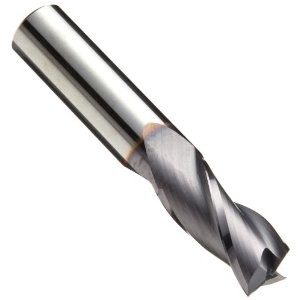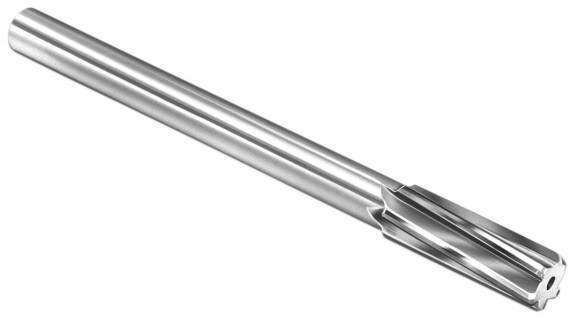There are a lot of tools used in machining today, so it’s often hard to keep up with the names of all of them, especially if you’re new to this career. Every tool has a specific job, and while a variety of tools may be able to get the job done, some are better than others.
Just so I don’t overload you, I’ll go through a list of the most common tools used in Machine shops, as well as Machine Tech schools. Each tool has a specific purpose, and there are many different kinds of the same tool. The more tools you use, the more knowledge you will get and know what works better for a certain material or operation. However, you must get an understanding of the of machining tools before just using any specific one without knowing what it’s meant to do.
End Mill
The almighty ‘End Mill’ is one tool that you will use almost every day if you run milling machines. If you need to cut both ends of a part to get it to a certain length, and end mill will side-mill the ends to make a clean and parallel surface. It can cut out pockets, and make square or round features in a part. There is so much that you can do with an end mill on a CNC milling center.

Whether you need to rough out a large solid piece of steel, or you’re just making some finish passes on aluminum, there’s an end mill for each job and every one in between. There are many different kinds of end mills. Here are the main variables you will have to decide when ordering tools: size (diamter), length (flute length), material/coating, roughing/finishing, number of flutes, and more.
Drill
Need to drill a hole? How about a few hundred holes? While there may not be quite the selection for drills as end mills due to the fact that you can only do so much with them, there are definitely right and wrong drills for any given job. 118 degree HSS or coated drills are the most common since they work well with most basic materials. However, you may need a drill for a hard stainless job, or perhaps a copper part that requires a deep hole with a close tolerance.
Tap
There’s not much else you can do with a tap other than tapping holes. Are you doing a blind or a thru-hole? Is it a metric or a U.S. standard thread? If you’re on a mill, the most popular taps are: cut tap, roll form, spiral point/flute, as well as a thread mill.
Cut taps produce chips because they literally cut a thread into the existing hole. You must use a drill that meets the minimum diameter tolerance for the specific thread you want. They are used on thru-holes because the chips won’t get in the way of the tap.
A roll form tap does not make chips because it forms and pushes the threads into place. It’s great for blind holes because the tap won’t break from chips collecting at the bottom.
Ream
A ream is used after a drill or a bore to meet a close tolerance call-out on the blueprint. Cheap drills are far from perfect and can easily make a hole over-sized, which will be rejected if it’s not within print. However, if you drill the hole .010″-.015″ under-size, you can then use the correct size ream to get a much more accurate and consider hole.

However, you should know that a ream will not ‘fix’ a hole. A ream just follows a hole, so if it’s crooked or out of round, the tool will follow that path. This is one reason why you may need to drill the hole then use a boring bar to make it perfectly round and straight before you ream it to size.
That’s it for the basic tools on this article from CNC Machinist Training. Stay tuned for another article that explains more advanced tooling that makes it much easier to do a job…
